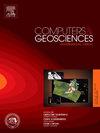A deep learning method for 3D geological modeling using ET4DD with offset-attention mechanism
IF 4.4
2区 地球科学
Q1 COMPUTER SCIENCE, INTERDISCIPLINARY APPLICATIONS
引用次数: 0
Abstract
Deep learning-based methods for 3D geological modeling can automatically identify significant geological features, which is crucial for intelligent 3D geological modeling. We propose a 3D geological modeling method based on ET4DD (Enhanced Transformer for Drilling Data). This deep learning model accurately predicts the lithology categories of 3D points. The study area for our experiment is located in the Tianfu New Area of Chengdu, Sichuan Province, China. We conduct data pre-processing operations, including resampling and standardization, on the data collected from 719 boreholes in the study area. The dataset was split into training and test sets at a 4:1 ratio. To validate the effectiveness of the model, we train a standard stacking model that integrates FNN, RF, GBDT, and XGBoost using the same dataset. The comparison shows that ET4DD achieves the highest precision, recall, and F1 score among all models, with respective scores of 97.33 %, 97.33 %, and 97.29 %. We use MapGIS software to visualize the lithology grid cells predicted by ET4DD, and select three subregions from the geological model for detailed comparison with the stacking method, complemented by visualizations of uncertainty. The results demonstrate that our method effectively captures geological variability and reduces the informational complexity of the geological model. In addition, the geological model generated by our method reveals the geological regularities, including the topology of geological bodies, the geometrical form of strata, and the spatial distribution characteristics of lithological units, leading to more accurate and reasonable simulations of actual subsurface geological conditions.
基于偏移-注意机制的ET4DD三维地质建模深度学习方法
基于深度学习的三维地质建模方法能够自动识别重要的地质特征,是实现智能三维地质建模的关键。提出了一种基于ET4DD (Enhanced Transformer for Drilling Data)的三维地质建模方法。这种深度学习模型可以准确地预测3D点的岩性类别。我们实验的研究区域位于中国四川省成都市天府新区。我们对研究区719个钻孔采集的数据进行了数据预处理,包括重采样和标准化。数据集以4:1的比例分为训练集和测试集。为了验证模型的有效性,我们训练了一个标准的堆叠模型,该模型使用相同的数据集集成了FNN, RF, GBDT和XGBoost。对比发现,ET4DD在所有模型中准确率、召回率和F1得分最高,分别达到97.33%、97.33%和97.29%。我们使用MapGIS软件将ET4DD预测的岩性网格单元可视化,并从地质模型中选择三个子区域与叠加方法进行详细比较,并辅以不确定性的可视化。结果表明,该方法有效地捕获了地质变异性,降低了地质模型的信息复杂性。此外,该方法生成的地质模型揭示了地质规律,包括地质体的拓扑结构、地层的几何形态和岩性单元的空间分布特征,从而更准确、合理地模拟了实际地下地质条件。
本文章由计算机程序翻译,如有差异,请以英文原文为准。
求助全文
约1分钟内获得全文
求助全文
来源期刊

Computers & Geosciences
地学-地球科学综合
CiteScore
9.30
自引率
6.80%
发文量
164
审稿时长
3.4 months
期刊介绍:
Computers & Geosciences publishes high impact, original research at the interface between Computer Sciences and Geosciences. Publications should apply modern computer science paradigms, whether computational or informatics-based, to address problems in the geosciences.
 求助内容:
求助内容: 应助结果提醒方式:
应助结果提醒方式:


